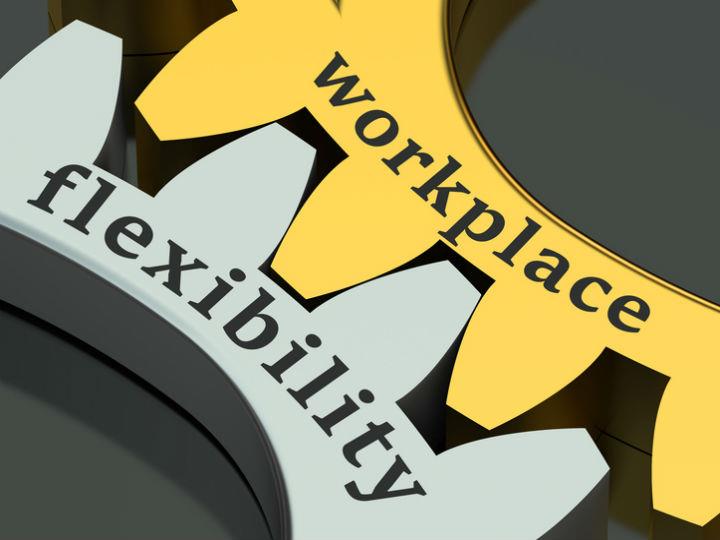by Zoe Kinias and Felicia A. Henderson*
When Susan Lloyd-Hurwitz became the CEO of Mirvac Group, a leading publicly listed Australian sustainable real estate development company in Australia, she found employee engagement was not at all sustainable. Low levels of staff engagement and extreme dissatisfaction with work-life balance could compromise their future success. A culture of “presenteeism” was undermining employees’ ability to meet demanding objectives in a sustainable way, whereas Lloyd-Hurwitz believed flexibility could allow the Group’s employees to remain productive and to become more passionate in pursuit of Mirvac’s strategy.
Our case study, “Mirvac: Building Balance”, which has just won the Hot Topic competition of the Case Centre Awards 2020, unpacks how Lloyd-Hurwitz freed Mirvac from limiting assumptions across multiple levels. First, the firm broke free from thinking that marginalises flexible work as a benefit designed only for mothers of young children. By focusing on how to lead a change initiative that makes flexible work practices mainstream, our case complements prior research showing how beneficial de-stigmatisation can be.
“We are going to treat you like an adult”
Mirvac Group had a strong reputation for high-quality property developments, including impressive projects, such as the Sydney Olympic Village, which housed over 16,000 athletes during the 2000 Summer Olympics. While the Group cherished the impressive ratings its projects earned for energy performance, it considered sustainability as encompassing a broader set of factors beyond the environmental impact of its buildings. In fact, its sustainability initiative featured its workforce as one of four focus areas.
Only 52 percent of all Group employees agreed that they could strike a balance between their work and personal commitments, and this figure was only 34 percent among construction staff. The problem was especially stark among the younger generation of employees.
Lloyd-Hurwitz described her intentions to remedy the situation: “The goal [was] to give people autonomy to manage their extremely complex, inter-connected lives. The message [was], ‘We are going to treat you like an adult.’”
A documentary shifted the narrative
Before rolling out a new flexibility initiative, the company participated in an Australian documentary following six men, including two Mirvac employees, as they attempted to adopt flexible work arrangements. The two Mirvac participants were:
-A 27-year-old development manager who wanted to pursue his interest in playing competitive volleyball
-A 31-year-old general construction foreman who wanted to spend more time with his baby.
These visible models provided the company an opportunity to challenge assumptions about flexibility – who it was for and how it could work. Flexibility became more easily understood as relevant to everyone, including men in core business functions. As Lloyd-Hurwitz said, this documentary “turbo-charged the dialogue.”
It also provided early “practice fields”, opportunities to test the new desired behaviours as described in scholarship on psychological safety. Along with beginning to mainstream the concept, safe opportunities to experiment with flexibility created better conditions for a larger rollout. Developing psychological safety was integral to the process.
Lloyd-Hurwitz as a model for leading change
An INSEAD Alumna (MBA ’94) and Board Member, Lloyd-Hurwitz provides a spectacular model of balancing textbook best practices for change management and leadership with pushing limits beyond what many thought was possible – demonstrating a second way this case challenges assumptions. For example, she maintained her vision even while early critics, including an important investor asked her, “Can you stop talking about people and sustainability?”
Yet, even as she pushed the limits and shifted the narrative, this initiative did not discard any of the usual flexible work concepts, such as remote work. Rather, it added empowerment of employees to introduce new dimensions, challenging assumptions about what flexible work could look like in practice.
Beyond providing a model for change management and leading through challenges in general, this case provides a role model for aspiring women, which can increase women’s interest in masculine work and their resiliency when concerned about confirming negative stereotypes. Given the spectacular underrepresentation of women in top leadership positions and as main protagonists in teaching cases for business audiences, we appreciate Lloyd-Hurwitz and Mirvac sharing their story.
While our case study is about diversity and women’s leadership, it is not only about those topics, as it is first and foremost about effectively leading change. Educators who are not necessarily focused on diversity can therefore integrate the case into their courses.
Human sustainability
One of the most interesting aspects of the Mirvac case is how Lloyd-Hurwitz leveraged the concept of sustainability at the heart of her company to drive the culture change.
Lloyd-Hurwitz understood this: If you want people to join your company, to bring their best selves to work and stay with you, you need to treat them with understanding, appreciation, tolerance and protection for their welfare, the same way that you should treat the environment. Sustaining the natural world also requires treating it well. It is all about respect. Given the company was a sustainability champion, could it not extend that respect to its own workers? Indeed, Lloyd-Hurwitz’s skilful visionary leadership could enable better balance between employees’ wellbeing and corporate goals. The case provides a model for how to challenge assumptions on many levels for the benefits of business and society.
*Associate Professor of Organisational Behaviour at INSEAD& the Academic Director of INSEAD’s Gender Initiative and Principal at Henderson Advising
**first published in: knowledge.insead.edu




 By: N. Peter Kramer
By: N. Peter Kramer
